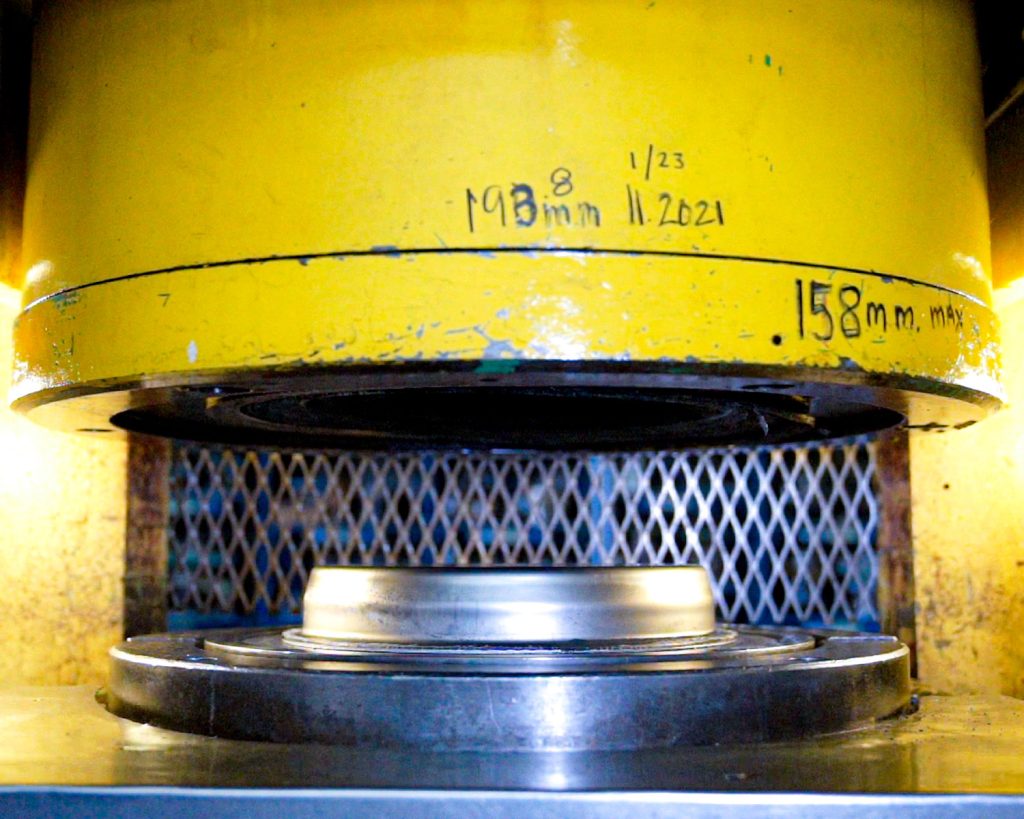Hydroforming is a specialized Deep Drawing process also known as Sheet Hydroforming. Sheet hydroforming allows various materials to become complex and structurally sound parts. It allows for asymmetrical or irregular shaped geometries, while conventional Deep Drawn parts are symmetrical and uniform throughout the entire shape. Another big difference is the depth of the parts produced by each. The Hydroform Press cannot produce shapes with sharp edges or angles, and the shapes are not as deep as Deep Drawn parts.
The Hydroforming process begins by placing a laser-cut blank over a die (typically made from rubber). High pressurized water forces the blank down over the mold, forcing the blank into its new shape. Both Hydroforming and Deep Drawing are both excellent, seamless manufacturing processes that do not require any welding.
The Deep Drawing process is better suited for larger production runs, or smaller runs for applications or components that will have long-term usage. The Hydroforming process is a popular choice when producing complicated, irregularly shaped or complex parts.
At Toledo Metal Spinning Company, we use a combination of stamping, hydroforming, and conventional deep drawing for a variety of applications. One application is to utilize our press capabilities for preforming a spinning operation. One advantage for using a press preform includes the benefit of flowing the metal towards the flange of the part, giving more material in this area verses a thickness reduction from our spinning process.

